Morgan 100 Programme 4 (https://www.youtube.com/
[As promised. Enjoy, Mark]
Posts specific to information relating to the Morgan Sports Car
[As promised. Enjoy, Mark]
[The Morgan Three Wheeler Club (MTWC), in the UK, has an interesting scheme whereas members who have too many cars, or for various other reasons, loan a Morgan out to other, and in some cases young(er), folks.
It is a bit of a win-win as the other folks get to experience life with a classic car that they might not be able to afford at the moment and the car owner gets the car looked after by knowledgeable club members (not necessarily those borrowing the car) and run routinely (we all know the importance of running the car every so often). The club (MTWC) also pays for the borrower’s car insurance.
This little video was made by the borrowing couple as an omage to the car (Mabel) they borrowed for the last two years. The car has now gone on to someone else.
It would appear that the MTWC has two vehicles being loaned out at the moment. Enjoy, Mark ]
From the MTWC Web Site (edited a bit): Holly and subsequently Scott borrowed a 1934 Super Sports JAP through the Classic Car Loan Scheme over the last two years. Mabel presented a few minor trials and tribulations but more often provided great fun and became an integral part of the Davies/Cornish Family.
Last weekend, Lancs & Lakes Group members collected Mabel as Steve is to borrow the S/S for the next 12 months.
Scott’s words: Mabel unfortunately left us yesterday on the back of a trailer, leaving a big hole in our garage and newly formed classic car shaped hearts. Whilst we are a little sad of her departure, we also so grateful that we got this opportunity. Words cannot describe the totally surreal and privileged position of borrowing her for not one but two years. Thanks to all for making this happen!
Check out the smiles throughout.
I published Programmes 1 & 2 a few days ago. This is a third programme that has just been made available. These videos were made in early 2009 during Morgan’s Centenary celebrations. These were originally available to purchase, however this is the first time these programmes have been made available for free. Enjoy, Mark
Many of you may have seen this a few years ago, as these were made in January to March 2009 during Morgan’s Centenary celebrations. These were originally available to purchase, however this is the first time these programmes have been made available for free.
There is a third programme that will not be available until Friday. I will watch for it and post it as soon as I can. Enjoy, Mark
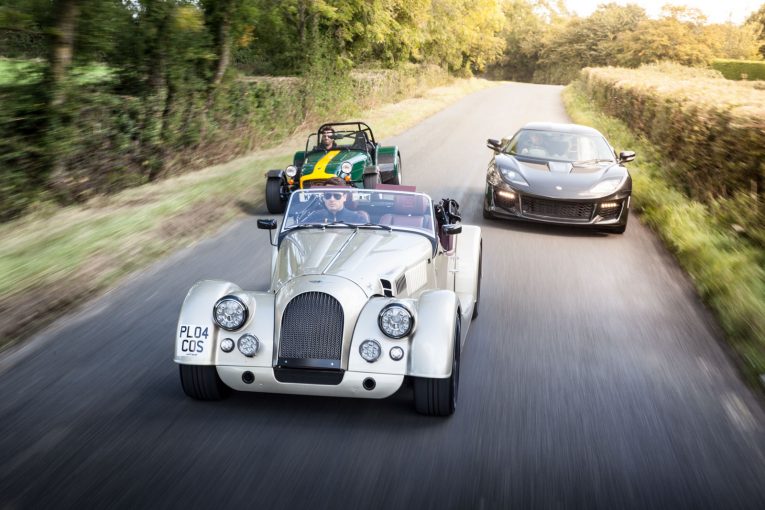
Photography by Bruce Holder
The lead shot for this feature wasn’t easy to get. A close-knit tracking shot is only ever millimetres away from looking like a Hollywood car crash, so you have to have your wits about you. On this occasion, that was somewhat difficult. There was a Morgan ARP4 ahead of me, and ahead of that was the Land Rover Defender tracking car, from which our photographer, Bruce Holder, was dangling precariously.
To my right, almost close enough to touch, was a Caterham Seven, exhausts barking while Paul, the driver, jostled for the perfect position to satisfy Bruce’s eye. As for me, I was in the Lotus Evora. I’ve already put plenty of miles on an ARP4. Plus, my mop of hair would have ruined the shot had I been in the lead car sans roof. Besides, I didn’t mind driving the Lotus, especially having discovered the button that makes the exhaust system even louder.
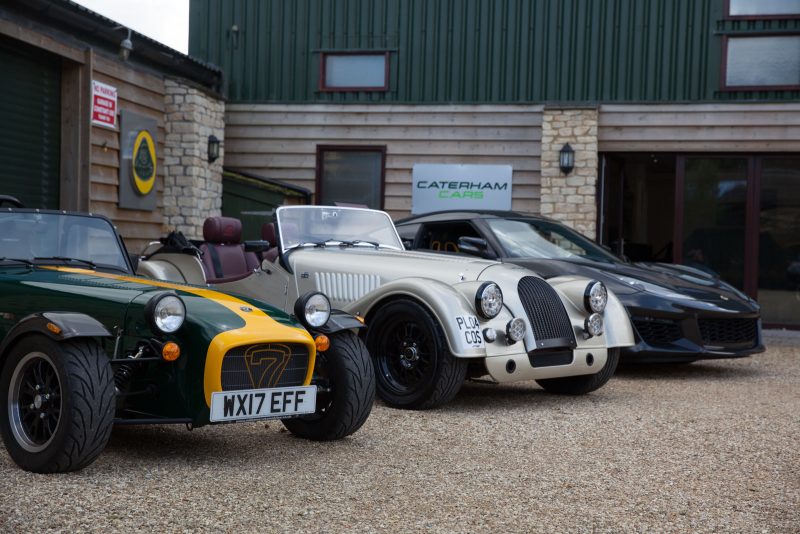
So why was it so difficult? Quite simply, because it was one hell of a distraction. Yes, other motorists were left agog at the sight of us three bombing along while a man on a string tried to take pictures (special acknowledgement goes to the man who’s chin was quite literally on his dash as he drank in the spectacle), but so was I. It was a hell of a moment. Three cars (four if you include the Defender) that all show why us Brits are a force to be reckoned with when it comes to going fast. When it comes to sports cars, Britain is at the top of its game.
Yes, it’s been a turbulent journey, with many great names falling by the wayside over the decades. But even though many British sports car builders have gone, that doesn’t mean we’ve been left with the dregs – far from it in fact. What we have now are the purest cars, the machines that have survived and evolved with such commitment that they have escaped our nation’s involuntary automotive cull. Basically, we’ve got the best of the best. But even so, that begs the question; which one floats my boat? And what of the ones that don’t?
To work that out, we have to look at the other cars flanking the ARP4. First of all, we have the Caterham Seven. Small enough to park under your stairs but with enough punch to rip them from the foundations, it’s a little brute. Obviously its origins are intertwined with Lotus, given that the Caterham started as Lotus Seven built under licence, but that’s where the ties end. A modern Caterham does not try to win over a modern Lotus customer. It’s too wild, too bare, and
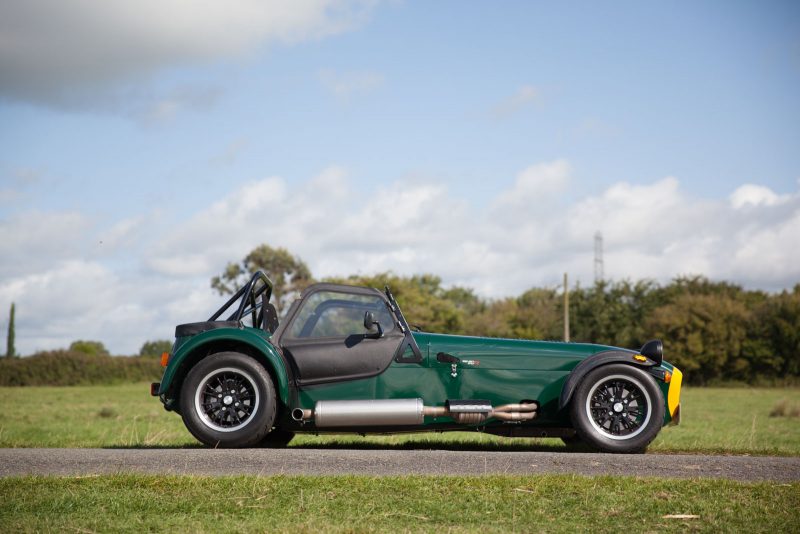
too barmy in fact. The Caterham Seven, in any guise, exists to appeal to those of us who put speed and excitement above all else. There are no compromises with this car. There is no boot, no creature comforts of any kind. It’s just man and machine working together; nothing more, nothing less.
Power-wise, the Seven is available with various outputs. In the case of the 310 we had our hands on, 152bhp was on tap from the 1.6-litre Sigma Ti-VCT engine, pushed through a five-speed transmission to the rear wheels. If that engine sounds familiar, that’s because it is. You’ll find it under the winged bonnet of a current Morgan 4/4. In the Malvern offering though, it’s a tame 110bhp unit that gently encourages the Morgan along. In the Caterham, it’s a different animal thanks to more power and a lot less weight. The Seven moves the scales to 540kg, which is about the same as the weekly ‘big shop’.
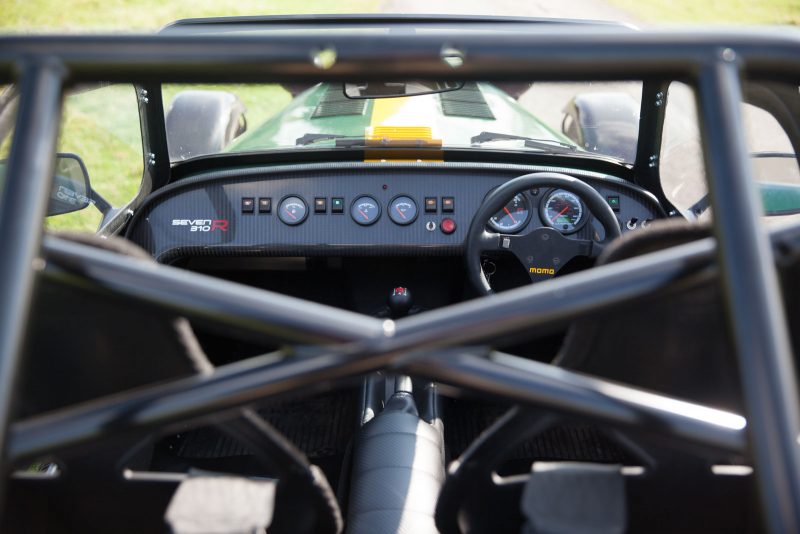
Drive the Seven and you need to adjust. Not only is your face contorted in ways you didn’t think possible by the rushing air, your body is also shocked. This thing is wild, untamed almost. It has no godly right to be as shouty, as outright fast and ultimately, as raw as it is. It feels unfinished, but not in a negligent sense. It just feels like it’s not a full car, it’s so light and basic. Given its tiny weight and silly power combination, you’d assume that the Seven has no grip. To do so would be to assume incorrectly. The De Dion semi-independent rear can put the power down without worry, while the front double-wishbone set-up ensures that the direct and mechanical steering points the car exactly where you want it.
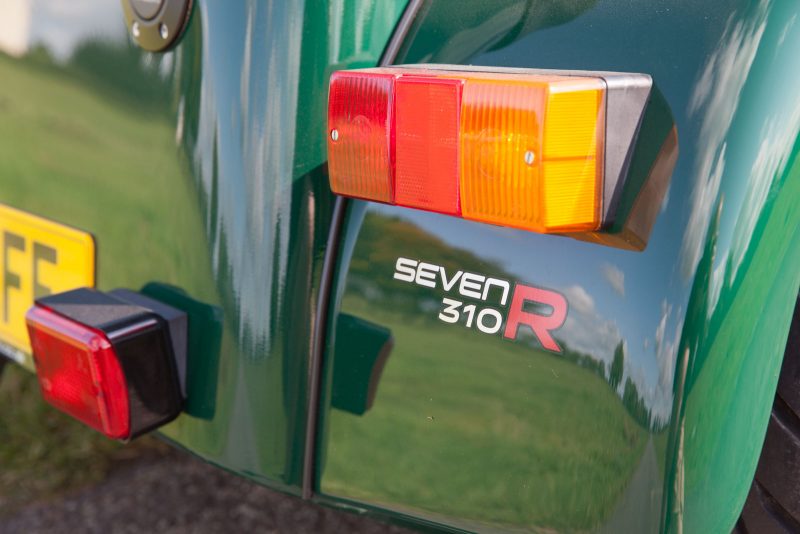
Disc brakes all round with no end of bite make sure you don’t end up in a tree. Driving a Morgan is an occasion, it’s an event. That’s why we love them. The Seven? It’s a swift kick to the senses. We love it, but for some, it may be a bit much. You can’t drive a Caterham in a civilised
manner. It’s the devil on your shoulder, the terrier tugging at its lead; it wants to go wild at all times. We applaud it for that but at the same time, we’re not sure we could live with it. It’s a car to be enjoyed when the mood takes you, not to be suffered when it doesn’t.
At the other end of the scale is the Lotus Evora. Full-bodied, it feels wider than it has any right to. But out of the three cars here, it also feels the most conventional and ‘car like’. Sitting in this thing, it’s obvious that the Evora is the kind of car that can swallow the miles while still rewarding the driver when he or she wants to push the pedal into the carpet. And rewarded you are. The Evora we have here is a 410, which as the name suggests, has 410bhp.
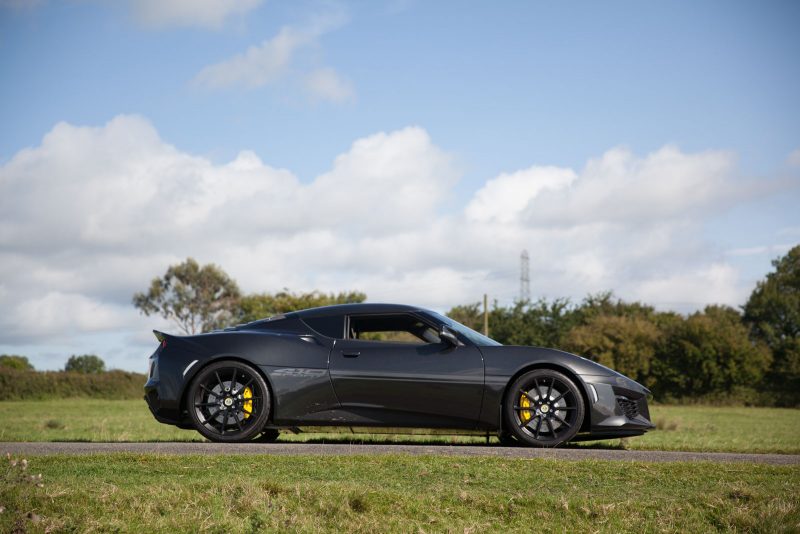
The Evora is an enigmatic beast. I won’t lie, I’ve never driven one before this and when I did, I was astonished by how quiet and civilised it was. You really could use an Evora every day, providing of course you’re limber enough to clamber into it on a regular basis. It doesn’t feel fragile or delicate; it felt tough and well engineered. It’s clear that Lotus has upped its game considerably over the years. But with a price tag around £80,000, so it damn well should.
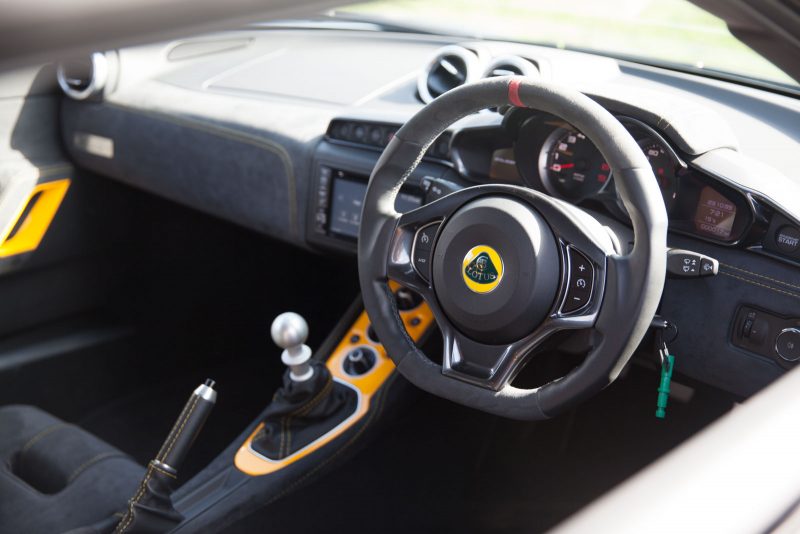
Powered by a 3.5 litre 24-valve V6 complete with an Edelbrock supercharger, there’s no doubt that this is a powerful car. But even so, it drives around with ease and without drama. You can quickly change that. A button on the dash allows you to make the exhaust louder, which is good for a giggle. If you want more, the Sport and Race buttons focus the Evora even more. The most remarkable transformation, however, simply comes via pressure on the accelerator. Give it a stab, hold it in gear and the Evora comes alive. The bark from the engine is incredible and with it, addictive. The suspension is firm but remarkably forgiving. The gear-change is mechanical and direct.
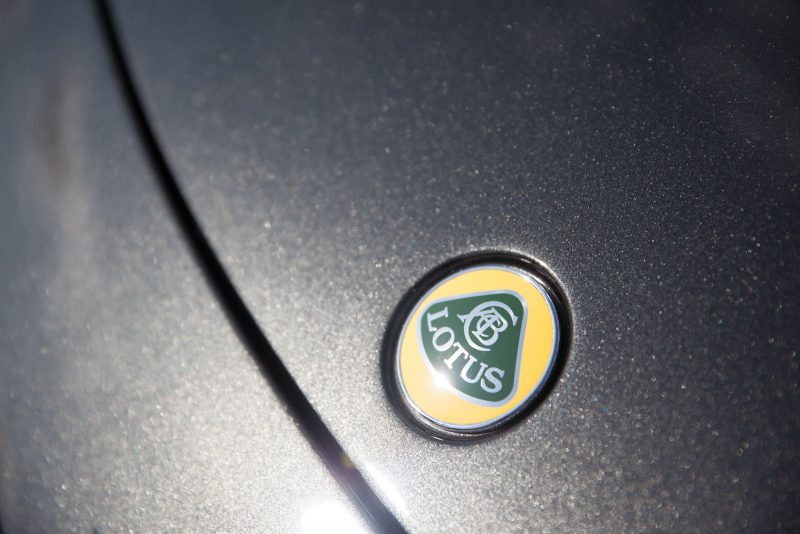
To drive an Evora fast is to be a part of the experience, not just a passenger. Back off though, and it’s just a car – albeit one with terrible rear visibility. We liked it – a lot. You get out of an Evora what you put into it. You’re in control, and that’s nice. But at the same time, we can’t help but feel it lacks a little soul. The switch between its ‘moods’ is so vast that it’s hard to bond with. It’s one thing or the other, but without any real emotion.
Finally, we have the ARP4. Even with its 225bhp Cosworth 2.0-litre Ford engine and modern, opinion-splitting LED headlights, it’s still far more anachronistic than the Lotus and even the Caterham. It looks classic despite being new. The lines of a Morgan are from the past, and it’s proud of it. It’s charming and enigmatic just from an aesthetic standpoint. As for the drive, yes, it’s firm and somewhat unforgiving on the more poorly-maintained surfaces but even so, you know where you are with it.
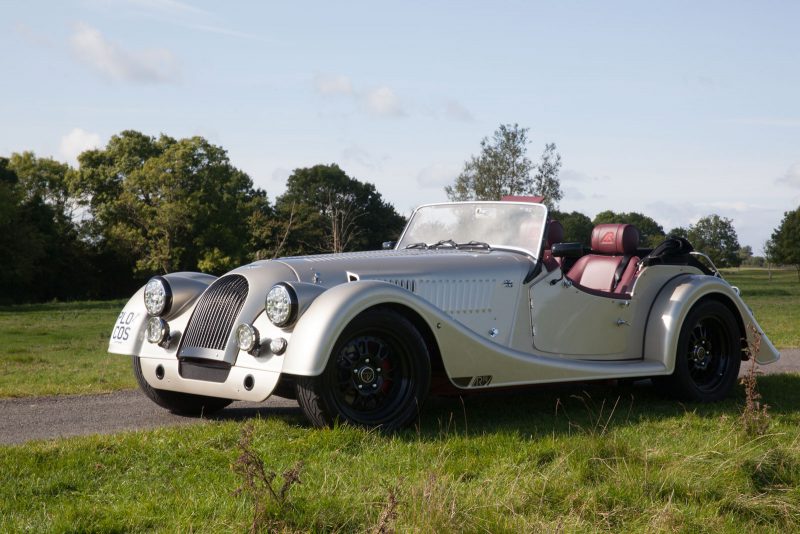
The Caterham is wild and angry at any pace. The Evora? It has the potential to be many things, but it needs you to choose via the onboard nodes. The ARP4 is a mix of all that. The engine has charm and character, whether you’re going 30 or 130mph. The only difference being that it shouts a bit louder at the latter.
It’s a balanced car, by which I mean it has no shifting personality. It takes very little time to bond with any Morgan and the ARP4 is no exception. It wants you to like it from the off and when you push it, it rewards you. You don’t need to be The Stig to get the most of it, but if you are, you’ll be rewarded appropriately.
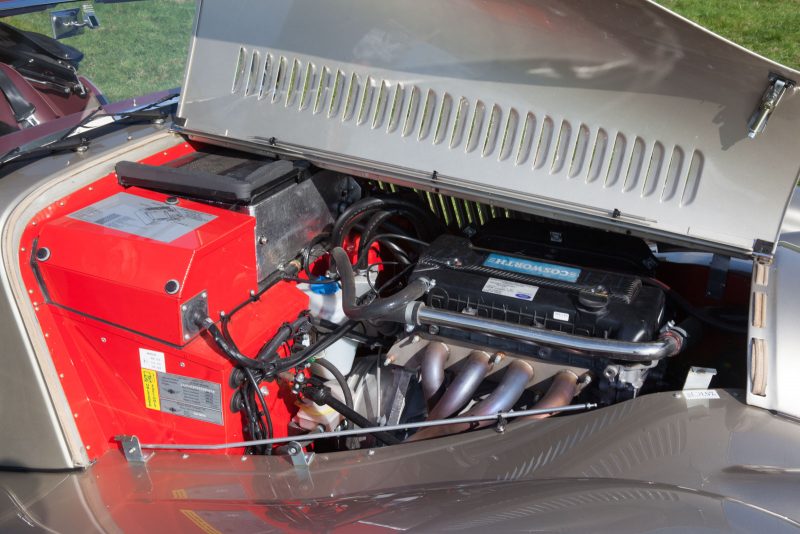
Price-wise, the ARP4 we had here can be yours for £60,000, which when put alongside the Caterham’s £30k and the Evora’s £80k, plonks it firmly in the middle. But it’s not a middling car. I’m not saying this with Morgan’s crosshairs aimed firmly at my temple, I’m saying it because I mean it: I would definitely have the Morgan. It’s a car for when the mood takes you, granted. I am certain that time spent behind the wheel purely out of necessity would mar the experience. But in a way, that thought is moot, as you would never buy such a car for ‘necessity’. You’d buy it for fun. And that’s why the ARP4 shines. It’s pure fun. You just jump in it and go. The Evora is great, but it’s too muted. The Caterham, for me at least, leans too much into compromises. It’s too raw, too full-on. It’s a machine you have to drive at 110%, and that would be exhausting.
For me, the ARP4 is a happy mix of the two, but with infinitely more charm, and charm is something I like in a car. The other two have their merits, of course. I love that as a country, we have cars like these. I loved the Lotus a lot. Its bark was infectious and had I been given more time with it, I’m sure my love would have grown. But even so, I know I would have been the one to provoke and create a reason for that love by driving it hard all the time.
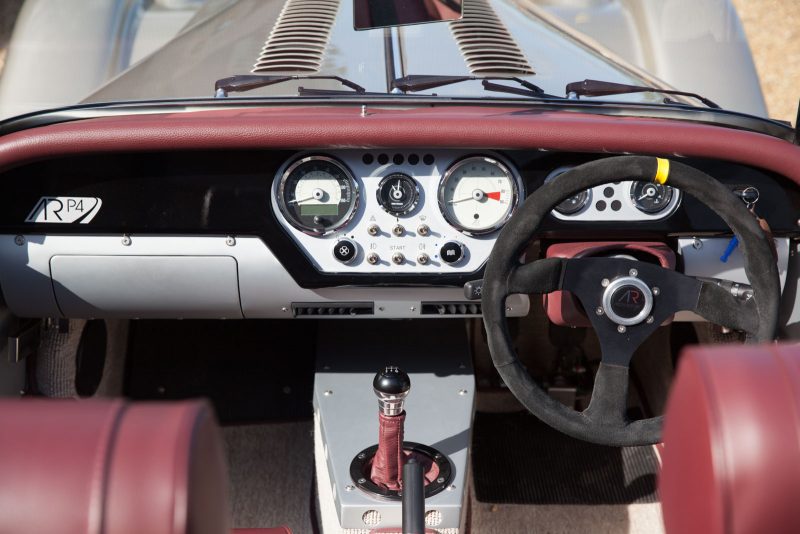
As for the Caterham, I love its unabashed madness, but you’d get sick of it quickly. As I said earlier, it’s a lot. It’s in your face at all times. But don’t get me wrong, I love that we, as great Britain, have these cars on our books. I love that all three are steeped in heritage and I was staggered by how far Lotus has come as a car-maker. But even so, the allure of the Morgan shone through for me. But that’s just me. You may choose a different fighter, and if you do, I’m confident that, as long as you buy it for the right reasons, you will be very happy indeed.
With thanks to Williams Automobiles in Chipping Sodbury, Bristol, who supplied all three cars for this shoot.
(https://www.enginebuildermag.com/)
[I know many of us have tunnel vision when it comes to modifying the Morgan. “Originality is a must! Modification is simply heresy . . .“
Ok, I get it, but I will have to say that in my opinion, one of the wonders of the Morgan car is the ability to modify it with relative ease. Sometimes, we find a need to improve something in the interest of safety. Sometimes, it is just a wild hare that gets us going. I have a few Morgan cars and have to say all of them have been modified in some way. Some are performance modifications while some are simply cosmetic.
In the midst of one of my efforts, the topic of Spark Plug heat range came up. As usually, I found a void in my understanding. So after a little searching, I found this article. It seems simple and direct so I thought I would share. Cheers, Mark]
Depending on the engine modifications you’ve made, you’ll need to take a few extra factors into consideration before settling on the right spark plugs.
These factors include spark plug seat design, thread length and diameter, and reach. One of the most important – and most misunderstood – factors in choosing aftermarket spark plugs is the heat range.
Heat range is the speed at which a spark plug can transfer heat from the firing tip to the cylinder head water jacket and into the cooling system. Choosing the right heat range is crucial for high performance engines. If the heat range is too cold, the spark plug will be unable to properly self-clean by burning off carbon deposits.
If it the heat range is too hot, your engine could experience detonation, pre-ignition, or power loss. Most spark plug manufacturers recommend that the tip temperature remain between 500° C and 850° C.
Heat ranges are designated by each spark plug manufacturer with a number. In broad terms, spark plugs are often referred to as “hot plugs” or “cold plugs.” A cold plug has a shorter insulator nose length – the distance from tip to spark plug shell – and transfers heat rapidly from its firing tip to the cylinder head water jacket.
Cold plugs are ideal for high rpm engines, forced induction applications, and other instances where the engine produces high operating temperatures. Conversely, hot plugs are good for applications that operate mainly at low rpms. Because they have a longer insulator nose length, heat is transferred from the firing tip to the cooling system at slower pace. This keeps the spark plug temperature high, which allows the plug to self-clean and prevent fouling.
Unfortunately, heat range numbers are not universal – each brand has its own method for assigning heat ranges. You’ll need to talk with your sales rep or consult with the manufacturer to find the best heat range for your application and spark plug brand. Be prepared to supply some basic vehicle information, including any modifications you’ve made.
[The internet is a great source for a given vendor’s spark plug offerings and some provide the relative heat range information. ]
As a rule of thumb, you can expect to require one heat range colder than the factory-supplied plugs for every 75 – 100 horsepower you’ve add with your modifications, according to Champion Spark Plugs. Here are some more basic guidelines to get you pointed in the right direction:
[Don’t be afraid to experiment a little. You can always revert to what you have now! Mark]
The principles of family have defined the Morgan Motor Company for generations. We’re not just talking about H.F.S Morgan – who founded the company 111 years ago – and his descendants, but the wider Morgan family: our workforce, our customers, our dealerships and our fans around the world.
To these people, few things are more important than building and driving Morgan cars. Normally, our factory does not close, but today our craftsmen and women will put down their tools.
It’s for one simple reason: without family, nothing else matters. And at this time, our family and your family are all that matters.
For the first time since World War II, and following [UK] Government advice, we have made the decision to close the Morgan factory for at least one month. During this period, we are committed to looking after each of our employees.
We would urge you to keep your Morgan in the garage, to follow Government advice and stay at home. The next adventure can wait, and when all of this is over, your next drive will feel like your first.
It’s more important now than ever before that we stay connected. We’ll still be online, so let’s keep the conversation going…
Important Information:
The Morgan Motor Company factory and offices are expected to be closed from 25 March to 20 April 2020. During this period, most of our usual business activity is suspended.
Morgan factory tour, car hire, and experience drive bookings during this period have been cancelled. These bookings can be rescheduled, and we will be in touch with you upon our return to work to assist you to with this.
Bookings made directly though Morgan Motor Company can be refunded if you are not able to reschedule. If you have purchased a voucher through a third party and are not able to reschedule, please contact the provider for more details.
All vouchers with an expiry date on or after 24 March 2020 will now be redeemable until the end of 2021.
Our online shop remains open.
For sales enquiries, please contact your Morgan Dealer. You can find your nearest Dealership here.
For Morgan Works Malvern aftersales, factory servicing or Aero Racing enquiries, please email dsc@morgan-motor.co.uk
For all other enquiries, please use the contact form on the link below and we will deal with your enquiry as best we can.
Thank you for your support during this period, we wish the best of health to all of you and we look forward to seeing you soon.
Morgan Motor Company
(Well, we all knew it was coming but, with the cancelling of the Geneva International Motor Show, we weren’t sure of the where and when. And, the US is mentioned!! That’s a good thing!! Cheers, Mark)
It would appear that the demand is still there for the traditional ladder frame cars so the MMC, not wanting to miss out on a good thing, will make a few more . . . the 70th Anniversary Plus 4s. Mark
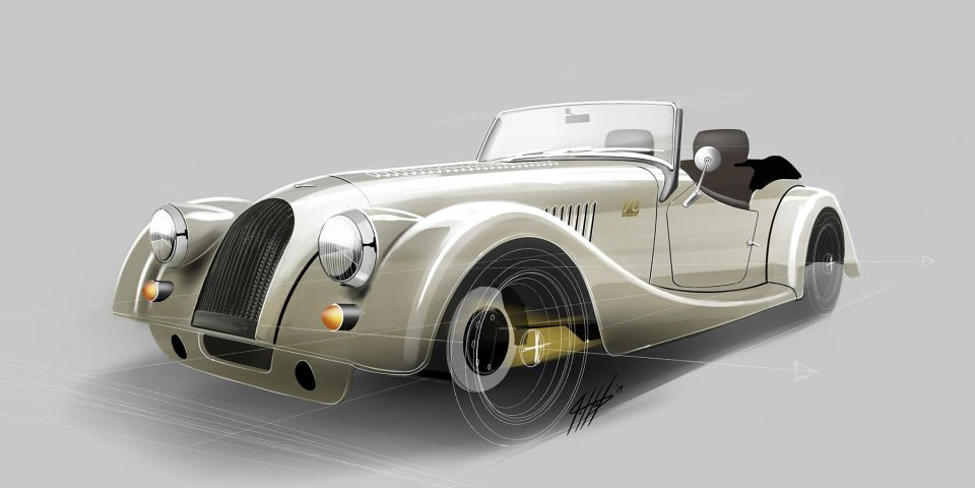
Morgan is sending its Plus 4 into the history books, where it’s pretty much been for 70 years, anyway. However, this time it’s doing something special to mark the end of its seven decades of production of the sports car.
To commemorate the life of the Plus 4, Morgan will build a special edition heritage roadster.
It will feature a more powerful 2.0-litre engine from Ford, as well as a Mazda-provided five-speed manual transmission.
The four-cylinder now makes 180 horsepower thanks to in-house tuning company Aero Racing, up from the previous 154 horsepower. Sixty miles per hour (96 km/h) happens from a standstill in just 7.0 seconds now.
We should note the 70 years of manufacture of the Plus 4 weren’t continuous: the vehicle ended production briefly in 1969, only to return in 1985 looking almost exactly the same.
Hilariously, Morgan released a design sketch of this last Plus 4, showing no changes to the design since it was revealed in 1950, and that’s a good thing. Just because the design is ancient doesn’t mean the tech is. Heated, leather-upholstered seats now adorn the interior, as well as a Ravenwood-veneered dashboard with a numbered 70th Anniversary plaque in the center.
Every one of them will be painted in Platinum Metallic paint and feature dark grey wire wheels with black trim and a “motorsport-inspired” front panel.
[They also will come with is a ‘gold’ painted (coated) chassis? Something I can’t really come to grips with. Mark]
Along with your special vehicle, Morgan will also provide a photo book containing images of the vehicle being built.
Morgan is only going to make 20 of them, and they’ll cost £60,995 ($103,000) each. If you want one, don’t even bother looking at the price, because they’re all sold out anyway. Deliveries will begin in the spring.